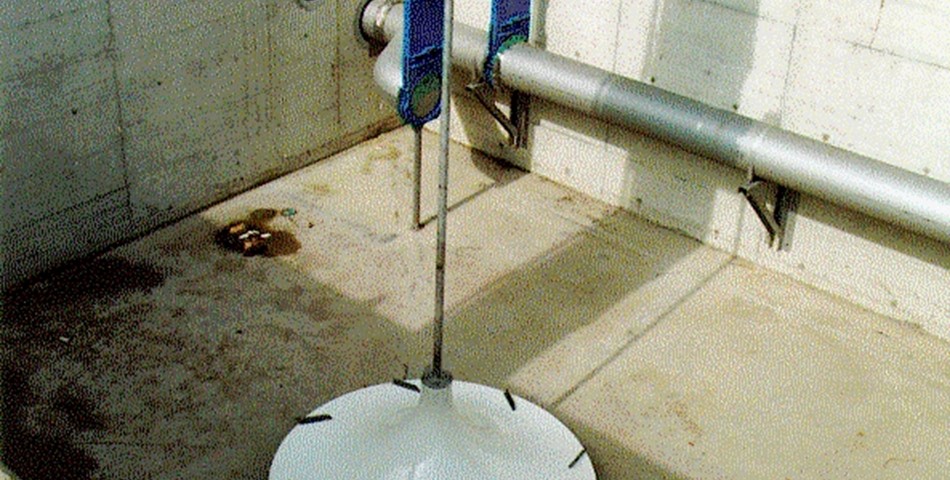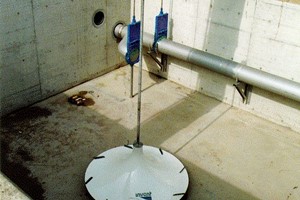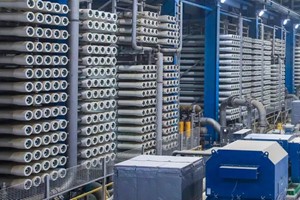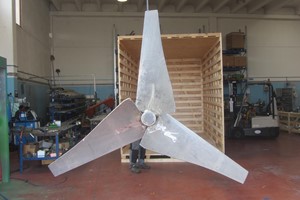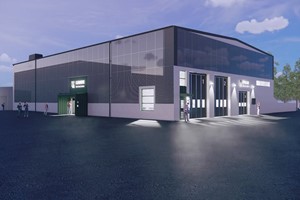The joint wastewater association Staufener Bucht, Germany, has placed its trust in the hyperboloid mixing technology of INVENT Umwelt- und Verfahrenstechnik AG. After 21 years in operation, the association has made the decision to replace the 15 HYPERCLASSIC® mixers of the second generation with even more energy efficient mixers of the seventh generation.
A resolution was made in Bad Kronzingen in 1967 to clean and treat the wastewater of 24 communities as a joint operation at a central location. This marked the launch of the powerful central wastewater treatment plant (wwtp) named Staufener Bucht. It has been in operation as a community wwtp since 1978. When the population number grew and the load limit was reached, the association expanded the wwtp in 1993. These days, it treats wastewater of a population that has since grown to 114,000, thus it is categorized under size class 5. By aerating and mixing in eight cascades in series, the plant achieves optimal environmental conditions for the activated sludge and the respective process.
Until the mid 1990s, the wastewater treatment focused primarily on carbon decomposition. Due to the Wastewater Ordinance amended at the time, the plant was designed and equipped in accordance with DWA-A 131 for nutrient elimination, in particular nitrogen and phosphorus. As a result of the more stringent requirements, the existing equipment of the wastewater treatment plant was no longer sufficient. For this reason, 15 second generation HYPERCLASSIC® mixers of the same design were installed in the anoxic and optionally aerobic basins in 1996.
Because the hyperboloid mixer is positioned close to the ground, radially high sediment velocities are generated to efficiently suspend the activated sludge flocks. At the same time, the high pumping capacity of the mixer ensures a thorough mixing of large volumes. In this way, the content of the basin is quickly homogenized. Until 2017, the mixers were operated with minimum maintenance requirements, trouble-free and reliably.
Constant improvements in research and development in the laboratory and on large-scale test benches as well as simulations by the specialists of THINK Fluid Dynamix®, the department for numeric techniques such as CFD and artificial intelligence, have over the years contributed to the improvement of the HYPERCLASSIC® mixer benchmark product. Minor changes to the mixer body, the connection to the shaft and the drive technology had a major effect on the mixer’s efficiency. As such, the seventh generation proved to deliver huge energy savings as compared to the installed second generation.
In 2017, after 21 years in operation, all 15 of the Staufener Bucht wastewater treatment plant’s mixers were replaced with 15 of the latest generation HYPERCLASSIC® mixers. This allows the association Staufener Bucht to save close to 54% electric output. The rated output was reduced from 1.5 kW to 0.75 KW, the output speed from 20.8 rpm to 15.8 rpm. Now, three years later, the energy savings can be confirmed.
“By replacing the existing mixers from 1996 with seventh generation mixers in 2017, by making a comparatively small adjustment to the inventory, we were able to reduce the total energy requirement of the wastewater treatment plant long-term and noticeably,” explains graduate engineer Michael Hacker, CEO of the joint wastewater association Staufener Bucht.
A large number of wastewater treatment plants that INVENT has equipped with the revolutionary hyperboloid technology since the mid-1990s when the company was established follow the example of the Staufener Bucht wastewater treatment plant and to this day still rely on the products supplied by the experts in water and wastewater treatment from Erlangen when upgrading their plants.



